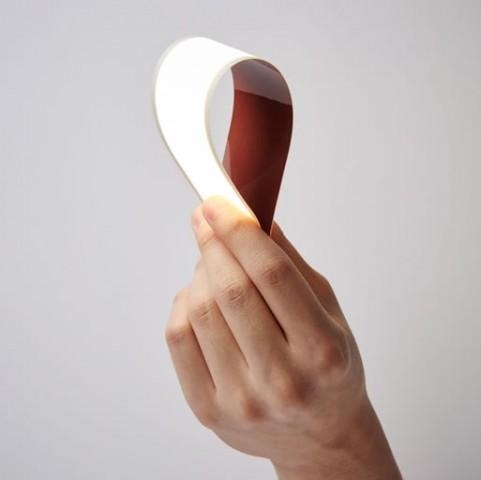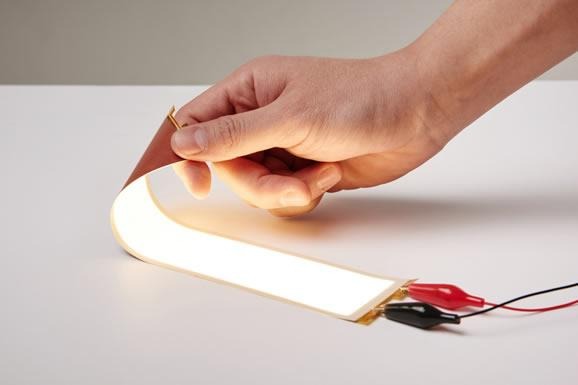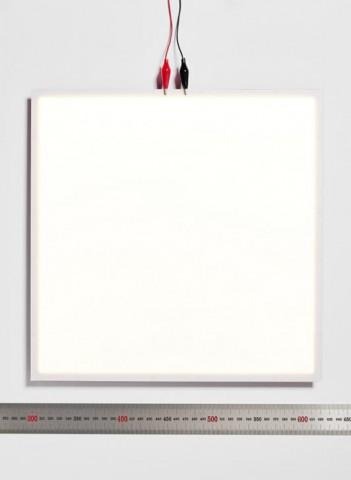LG Reveals Extremely Bendable Plastic OLED Lighting Modules
Screens won't be the only things that will be bending soon. Flexing ones again its manufacturing prowess, LG Chem, the company's chemical arm, which makes batteries among other things, is flaunting a new type of lighting panel. Aside from its extremely bright luminance, the main attraction for this module is its flexibility. Going beyond how far current glass-based OLED lighting modules can bend, these panels can flex and twist up to 30 mm, opening up the possibilities for this type of lighting source.
LG Chem is able to accomplish this seemingly impossible feat primarily by switching materials. As you might expect, glass-based OLEDs can only be bent and be pressured up to a certain point, 75 mm to be exact, before they break. By switching to plastic-based OLEDs, LG is able to minimize that effect and increase the bending capabilities of the panel. This P-OLED material is pretty much the same thing that the manufacturer has been singing about in its circular G Watch R and, more recently, in the G Flex 2.

The problem with P-OLED lighting panels, however, is that they traditionally have lower energy efficiency and lower brightness. LG managed to break this barrier with this new panel, which has a 60 lumens per watt efficiency and a brightness of 75 lm.

In addition, to this flexible lighting panel, LG Chem also claims to have made the world's largest OLED lighting panel. This one measures 320 mm x 320 mm, has an efficiency of 60 lm/W, and a brightness of 800 lm for only a power input of 8.5V 1,600 mAh. When pushed further, it can produce an output of 1,200 lm, close to that of a 60-75 Watt incandescent lamp.

So will these developments take us closer to the dream of a truly flexible smartphone? Not exactly, as there are much more factors, not to mention electronics, involved there. But LG Chem's progress does mark the first time that OLED lighting of this size or flexibility have reached such levels of brightness and power efficiency. The flexibility also makes it possible to use the panels in less traditional designs. That said, the panels are still a bit costly. The flexible P-OLED module, for example, will cost around $250 per panel when it becomes available in July, while the large 320 mm x 320 mm ones will have a price tag of $680 per panel.
VIA: OLED-Display
